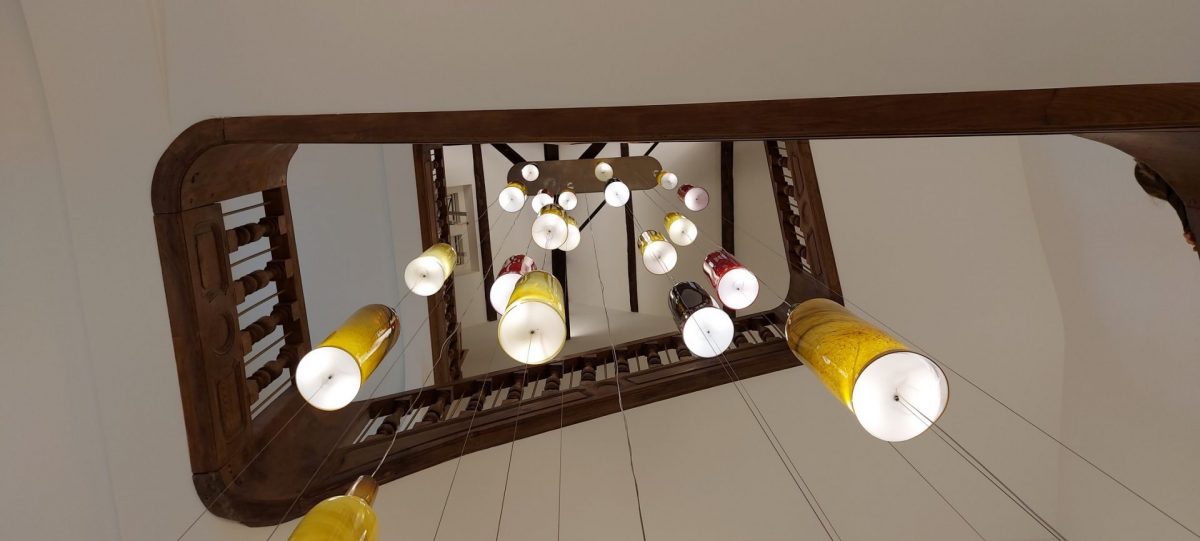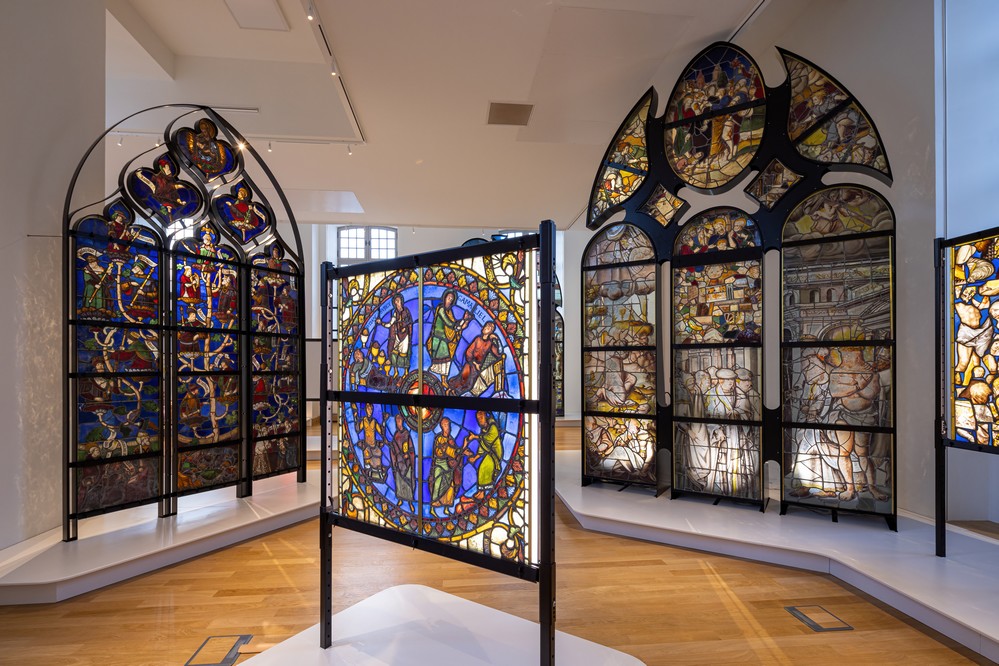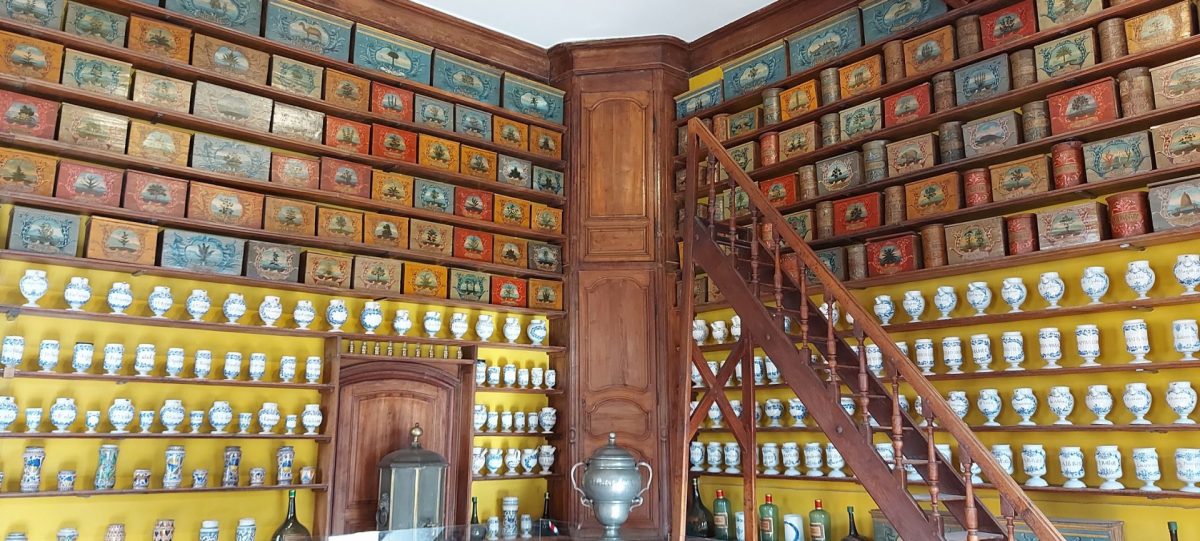Summary of the previous episode:
The last episode made you discover the Hôtel-Dieu building and the “Cité du Vitrail” through four emblematic architectural and decorative elements.
The “Cité du Vitrail” is a unique place in France, where you will have the opportunity to discover stained glass at eye level, from very close.
Indeed, at the “Cité du Vitrail”, you will not have any difficulties to admire the stained-glass windows that usually illuminates our churches. The artworks are right there, within easy reach. This proximity will allow you to appreciate every detail.

More than sixty artworks are on display, covering a wide range of styles, techniques, uses and periods. Some are on permanent display, while others are here for temporary exhibitions. They have been bought, donated or loaned.
Let there be light!
The tour goes from top to bottom of the building, which seems rather paradoxical given that a stained-glass window, when telling a story, is read from bottom to top (and from left to right). But this choice was made regarding the layout of the building, and it has proved to be the right one, guiding visitors towards ever more space and light.
The last level, in the attic (which is where the tour begins), is designed to teach you about the history and technique of stained glass. A master glassmaker’s workshop has been reconstructed beneath the beautiful wooden framework.
The lower level houses the treasure room, a small, darkened room that showcases the oldest known stained-glass window in Troyes, a miraculous 12th-century piece that has been carefully preserved.

This floor also houses the stained-glass gallery, which will immediately surprise you with its size, luminosity, the immaculate whiteness of its walls and ceiling, and the total absence of explanations, video screens or touch-screen terminals. The works are left naked in front of you, just as they appear in their natural environment. This almost monastic bareness creates the conditions for an unmediated dialogue between the stained glass and the viewer, and fosters a moving intimacy between human being and work of art.
A change of dimension
The lower floor is distributed as follows: to the right is the space dedicated to temporary exhibitions, and to the left the sacristy and chapel.
With its liturgical furnishings, the sacristy acts as an airlock between the secular and sacred worlds. You might not be ready for the shock you will have, in a positive way. You will step out of a relatively confined room into another dimension. The wow effect is guaranteed, even if this colloquial expression is ill-suited to the majesty of the premises.
What a marvel this chapel is!
You will be overwhelmed by the scale, the luminosity and the powerful beauty that emanates from the monument. The splendour of the painted ceiling and trompe-l’œil murals is breathtaking. A number of colourful skylights have been added to the windows as picture rails, or placed on the floor.
Everything here exudes luxury and refinement. A reflection of human genius, the chapel is obviously the highlight of the visit. Above the altar is an inscription in Latin, which can be translated as: privileged altar. So yes, you might feel privileged to be part of such harmony!
The bonus
The tour doesn’t end here, or rather doesn’t begin here, as you will be advised at reception to start with the Apothecary’s, on the ground floor. This serves as an appetiser. It is a museum within a museum, and its presence here is not at all incongruous: it existed before the “Cité du Vitrail” opened, and it is a testament to the area’s hospital past.

Next its laboratory, the Apothecary’s is the equivalent of our modern pharmacy: the laboratory made remedies from plant, animal and mineral ingredients stored in the apothecary.
There are two formidable walls made up of rectangular or cylindrical wooden boxes, called silenes, on which are painted the name and a representation of the product they contain. They are works of art in their own right.
A no less impressive collection of ceramics dating from the 16th to the 18th centuries completes the shelving.
Both the Apothecary’s and the Laboratory also feature a wide variety of utensils and instruments, all very beautiful, testifying to the infinite wealth of this period.
Beyond the strong impression left by your visit to the “Cité du Vitrail”, you will probably remember a few key artworks based on a choice that is both objective and subjective. You will learn more about them in the next episode.
*De gauche à droite:
Laines-aux-Bois (Aube), église Saint-Pierre-ès-Liens, 1510-1520, coll. Cité du Vitrail, dépôt de la commune de Laines-aux-Bois
Châlons-en-Champagne, trésor de la cathédrale Saint-Etienne, Découverte des reliques de saint Etienne, vers 1155, prêt de la DRAC Grand-Est
Provins, église Sainte-Croix, verrière de la Passion, début XVIe siècle, prêt de la Ville de Provins
